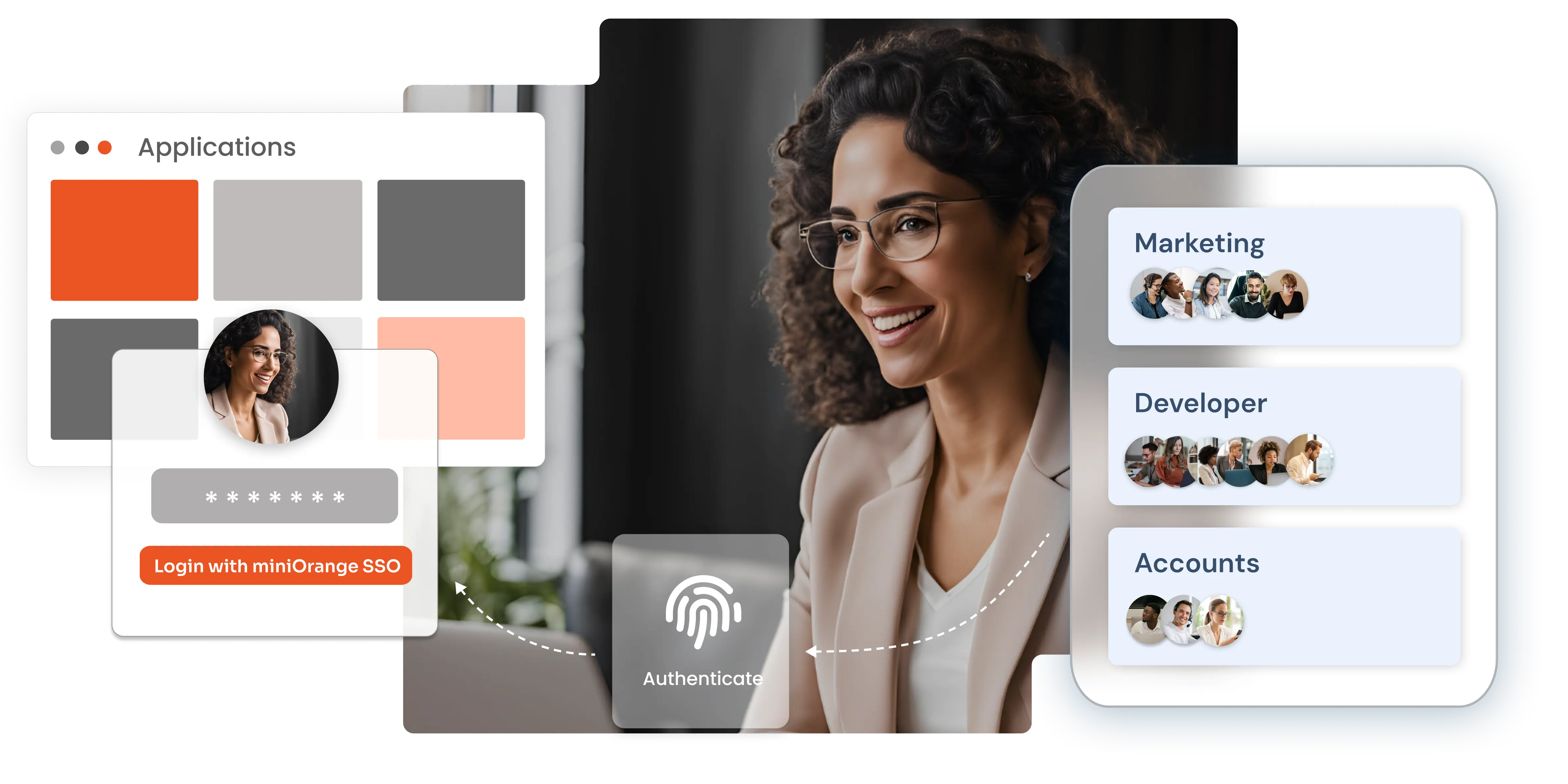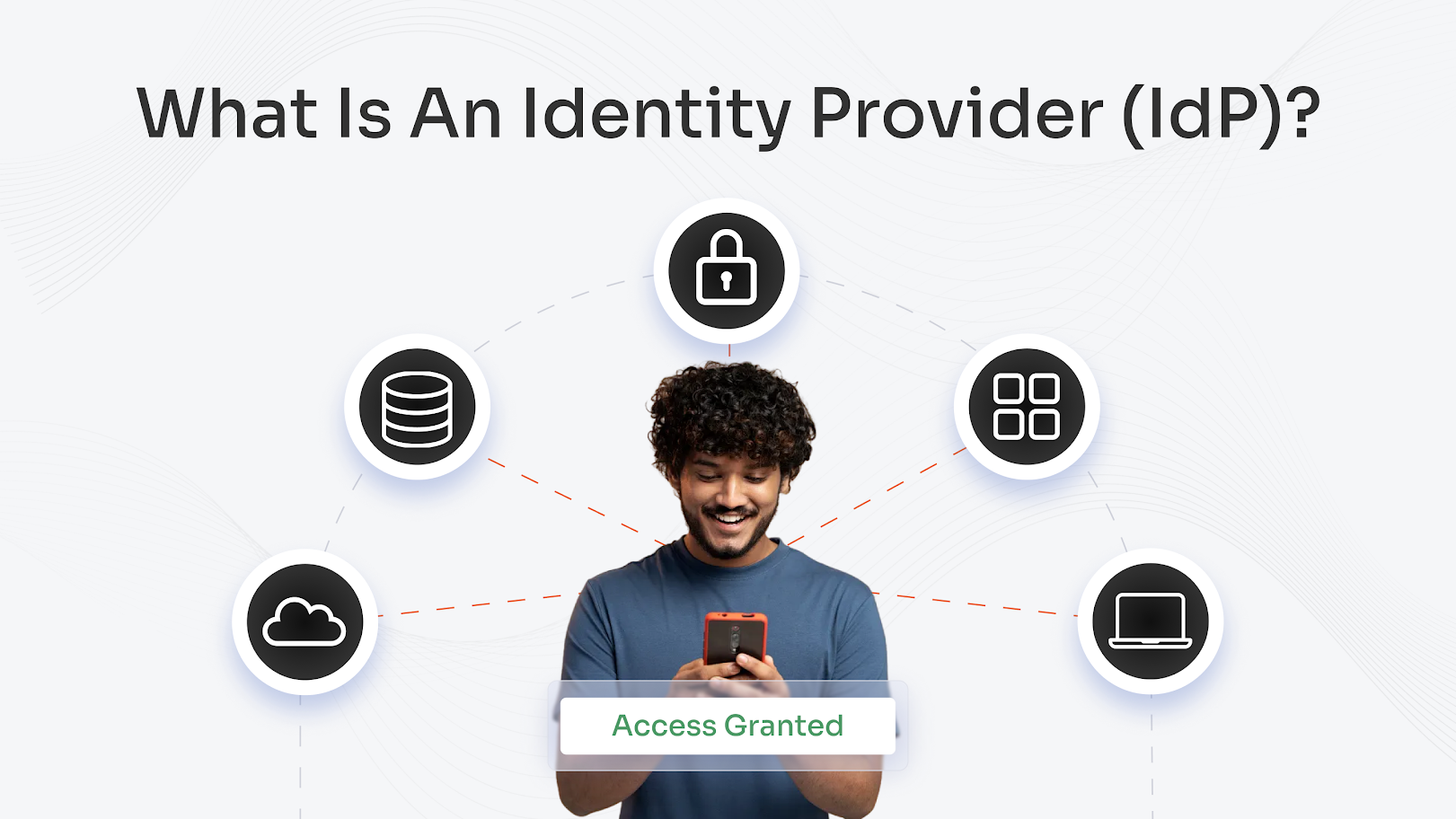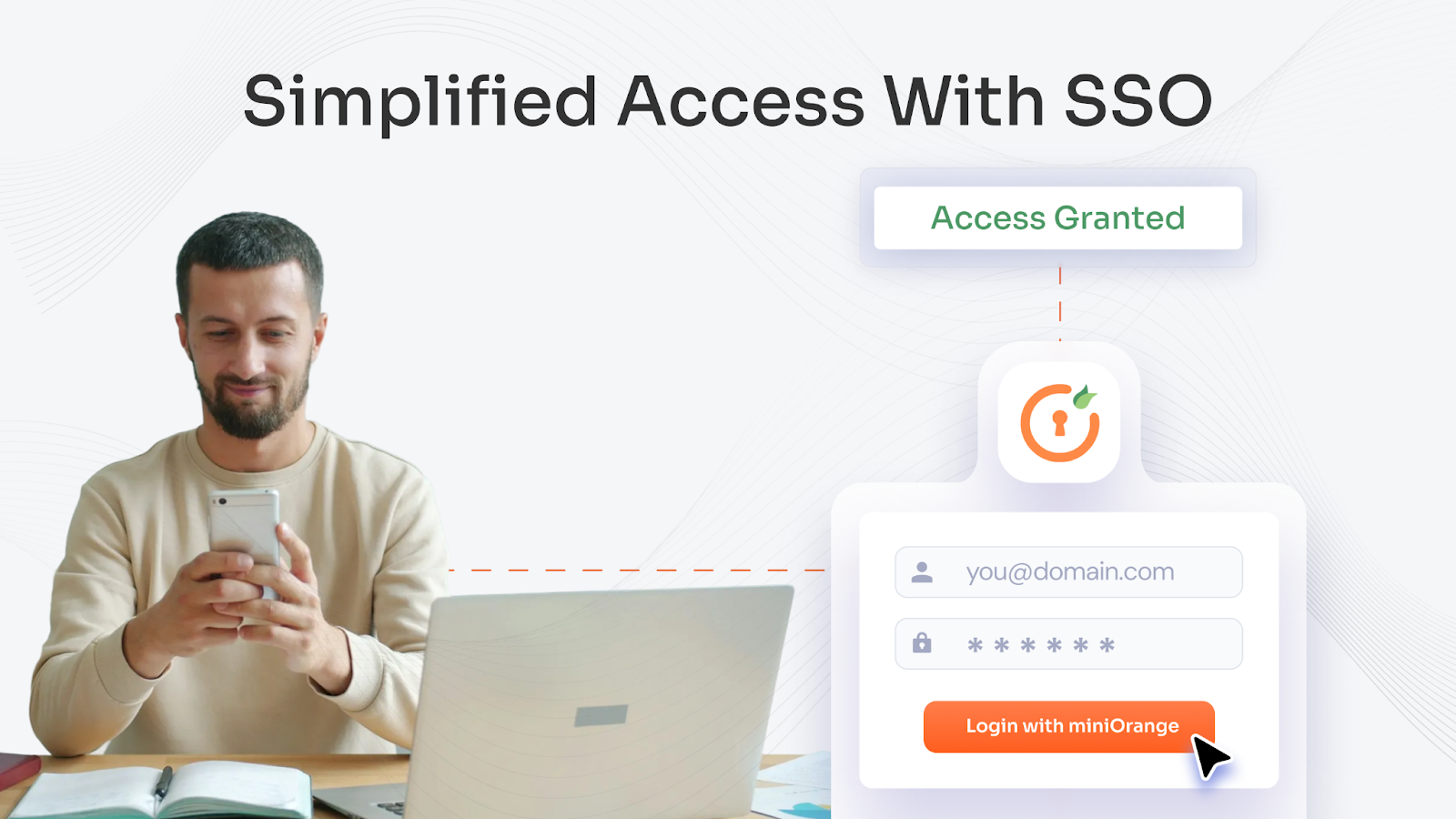The global learning management system market size is estimated to reach $70.83 billion by 2030, from a market value of $24.05 billion in 2024, at a CAGR of 19.9% from 2025 to 2030 timeframe.
eLearning is rapidly growing because it is becoming the backbone of individual learning, corporate growth, and overall organizational development. However, logging into different LMSs is a nagging pain point, even today. A distorted login process not only weakens the security but also frustrates the users.
The Single Sign-On (SSO) solution eliminates this problem by letting users access LMS platforms using a single set of credentials.
Among the industry leaders, miniOrange stands out for its rich functionalities, features, and flexible SSO solutions for LMS platforms, making eLearning accessible and safe to every organization.
What are the Benefits of SSO for LMS?
SSO for LMS solves a range of problems, from the need to remember passwords and usernames for multiple apps to reduce the risk of cyberattacks.
Key benefits of SSO for learning management systems are listed below.
1. Better User Satisfaction and Experience
Signing into your LMS can be seamless with Single Sign-On (SSO). This solution allows educators and learners to access their accounts with just one click, enabling smooth and secure transitions across applications.
With this solution, there are no forgotten passwords, cumbersome password resets, or delays. This promotes positive user experience and satisfaction.
2. Strengthened Security for LMS
Since SSO centralizes the authentication process, the risk of weak or reused passwords for multiple websites is significantly reduced, which happens to be a major vector for cyberattacks.
Also, SSO is performed via notable identity providers such as Google Workspace or Microsoft, for which the users already have their credentials.
Furthermore, SSO supports strong password policies and implementation of Multi-Factor Authentication (MFA), an additional security layer while logging into accounts.
3. Better Efficiency for Admins
For admins, it is easy to handle user accounts: creation of user roles, groups, and managing access permissions to resources.
With just a single, centralized dashboard, admins can control user accounts without switching between multiple tabs.
4. Big Save on Time and Money
A substantial reduction in the helpdesk tickets related to login complications and password resets results in tangible cost savings.
A dip in the number of login screens saves time, and lesser accounts mean fewer passwords and usernames, which can be easily handled by the admins.
In addition, SSO accounts for faster onboarding/login, which means learners can access crucial courses immediately without IT bottlenecks; it is a win-win situation for budget and productivity.
5. Precise User Access Control
With the help of the SSO product, it is possible to control who can access what, preventing unauthorized access to LMS platforms. This is essential to protect sensitive training data, especially for companies that are in aeronautics, space technology, or defense tech.
User access control works in this way. Suppose a large organization uses LMS for employee training. With SSO, admins can set up rules, for example, only HR can view the training modules, managers can create and assign training to their teams, and employees can see the courses relevant to their roles. So, if an intern wishes to access advanced training modules, SSO will deny entry.
6. Audit Trails and Compliance with SSO
Audit trails make it possible to keep a track of every user activity, so if any anomaly is found, then it can be removed.
SSO is compliant with the well-known regulations worldwide, such as GDPR, HIPAA, SOC, PCI, and more.
Read more about compliance regulations.
7. No Need to Remember Passwords
With SSO, users have to remember only one set of username and password to log into their LMS accounts.
For example, a student logging into the LMS uses the same set of credentials for their course and email, instead of different passwords every time.
Steps to Incorporate SSO in Your LMS Platform
Here’s how you can integrate SSO into your learning management system. miniOrange offers a comprehensive outlook on how to set up SSO in your LMS systems, such as Blackboard, Canvas, Moodle, and more.
Step-by-Step Process
- Check the Organization’s Requirements: Analyze your security needs, user base, and technical architecture to choose the best SSO protocol and features.
- Choose an Identity Provider (IdP): Select an IdP that aligns with your organization’s needs, for example, a need for better user experience and management. Popular IdPs are miniOrange, Okta, Microsoft Entra ID, and more.
- Configure the IdP: Here, set up metadata and attributes important to sync with your LMS.
- Integrate with the LMS: Add IdP metadata into the LMS for authentication purposes.
- Test and Validate: Run pilot tests using dummy user groups, and solve glitches (if any).
- Deploy and Monitor: Now roll out LMS with SSO to a larger audience, constantly monitor the performance, and solve problems proactively.
What are the Tips for Integrating SSO in Your LMS?
Here’s what you need to know before integrating single sign-on in your LMS platform.
1. Assess Your LMS Needs
What are your LMS needs? What does your organization need to simplify the user login process and safeguard its LMS systems?
You can start by analyzing the usage patterns, user base, and security requirements. Popular platforms such as Canvas, Moodle, and Blackboard support SSO.
2. Select the Right SSO Provider
Selecting the right SSO provider is essential because it impacts the security, scalability, and user experience of your LMS. Some of the points to consider while selecting a vendor are:
- Whether the vendor supports SSO protocols such as OAuth, SAML, and OIDC or not.
- If the vendor offers additional security measures such as MFA or adaptive MFA.
- Check if the vendor offers compliance regulations such as HIPAA, GDPR, etc.
- Look for an SSO vendor that offers scalable, flexible, and customizable products, so it is easy to adapt to the growing IT landscape.
- Opt for a vendor that has a dedicated customer service team to handle maintenance and glitches.
miniOrange offers compliant, scalable, and customizable SSO solutions that are compatible with the popular SSO standards.
3. Plan the Integration Process
During the planning phase, work closely with your IT and cybersecurity teams, so the SSO integration for your LMS goes smoothly.
Things to note during the integration process are:
- Which IdP are you going for?
- Which SSO protocols will be used?
- What are the policies and compliances being implemented?
- Configuration between IdP and your LMS
- Authentication and authorization flows
4. Test the SSO Integration
Testing involves checking the security level, functionality, and performance of the SSO software, so users can easily access your LMS without any hassles.
During the testing phase, aspects such as compatibility with different browsers, OS, devices, and protocols are checked.
Also, system response time and login time are verified during the testing phase. Further, user testing with a small group is conducted before expanding to the whole organization.
5. Monitor and Troubleshoot Regularly
Actively review SSO metrics and logs to maintain resilience against evolving threats. Key SSO metrics to monitor are error rate, authentication time, and user satisfaction.
Regularly monitor troubleshooting issues such as network connectivity, configuration errors, cache or cookies issues, etc.
6. Offer User Support and Training
Despite smooth integration, users will have doubts and may need guidance. Provide training materials, clear communication, and responsive support to reduce confusion, boost user confidence, and encourage adoption of SSO.
7. Take Scalability into Consideration
Plan for the future. Your organization and LMS needs will grow, so pick an SSO solution that can scale up. It can sustain more users, adapt to new systems, and handle traffic surges without hassles. MiniOrange, for example, offers scalable and customizable solutions developed to grow with you.
SSO for eLearning: Common Challenges and Solutions
Before implementing SSO in your LMS, take into account some common challenges, so you’ll know how to avoid them. Here are certain challenges along with their solutions.
1. Compatibility with the Existing LMS
Various LMS platforms, such as Blackboard, Moodle, Canvas, etc., have unique integration requirements and architectures. If the SSO provider doesn’t support your LMS, it can lead to extra costs, complex customizations, and delays.
Solution: Choose a vendor that supports multiple LMS platforms. miniOrange’s SSO product can be considered because it is compatible with a wide range of learning management systems. Also, whether your LMS is on-prem or cloud-based, miniOrange’s product offers flexible deployment options.
2. User Experience Issues
SSO is there to simplify logins, but there are chances that users will forget their passwords or encounter access problems. So, these issues need to be handled well, as they can frustrate learners and increase support tickets, undermining the perks of SSO.
Solution: This challenge can be handled with Self-Service Password Reset (SSPR) options, which are provided by miniOrange. SSPR allows users to regain access without IT intervention.
3. Privacy and Compliance Concerns
Data privacy and compliance are an essential part of the LMS platform, as the identities of users must be protected from malicious attacks.
Solution: Check whether SSO complies with GDPR, HIPAA, FERPA, and other regulations. miniOrange emerges as a strong provider of these compliances, reducing legal and reputation damage linked to privacy violations.
4. Scalability for Larger Institutions
With the growth of organizations, LMS usage often surges. This includes a steady rise in the number of users and more integrations with systems. Some single sign-on solutions may struggle to handle this organizational growth, leading to downtime, unwanted errors, or increased management complexity.
Solution: miniOrange’s SSO platform is designed to be highly scalable and customizable. This means it can easily accommodate thousands of users, multiple LMS platforms, and expanded security policies without compromising performance.
miniOrange SSO Features for LMS
Get a detailed overview of miniOrange's SSO solutions specifically designed for educational platforms. Explore its key features below.
Key Features
- Supports SSO protocols, such as OAuth 2.0, SAML, and OpenID Connect (OIDC)
- Integrates with third-party applications
- Mobile-friendly access functionality supports learning on any kind of device
Conclusion
Implementing single sign-on within your LMS is more than a technical upgrade; it is a strategic move towards building usability, security, and operational efficacy.
With miniOrange guiding the way, educational institutions and enterprises unlock safe, scalable, and accessible learning experiences for users.
To explore how miniOrange can transform your LMS, reach out today for a personalized consultation or demo.
FAQs
1. What is the difference between Single Sign-On and Multi-Factor Authentication (MFA)?
SSO simplifies login by using one set of credentials across multiple applications, while MFA adds an extra verification layer, like an OTP or biometrics, to boost security levels.
2. How does miniOrange ensure the security of my LMS with SSO?
miniOrange supports SSO protocols, compliance, and integration with multiple identity providers to protect user data and secure user authentication.
3. Can I use miniOrange SSO with multiple LMS platforms simultaneously?
Yes, miniOrange’s SSO comes with a flexible architecture that enables integration with varied LMS platforms at the same time. This helped to simplify management across the platforms.




Leave a Comment